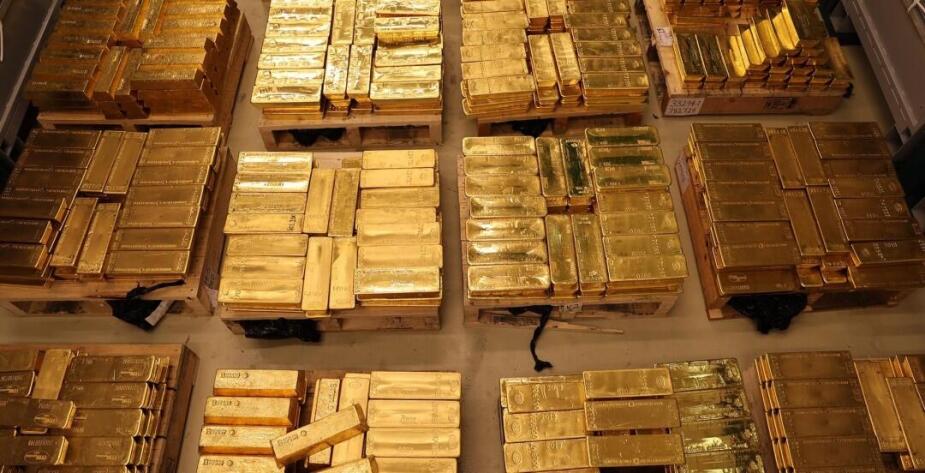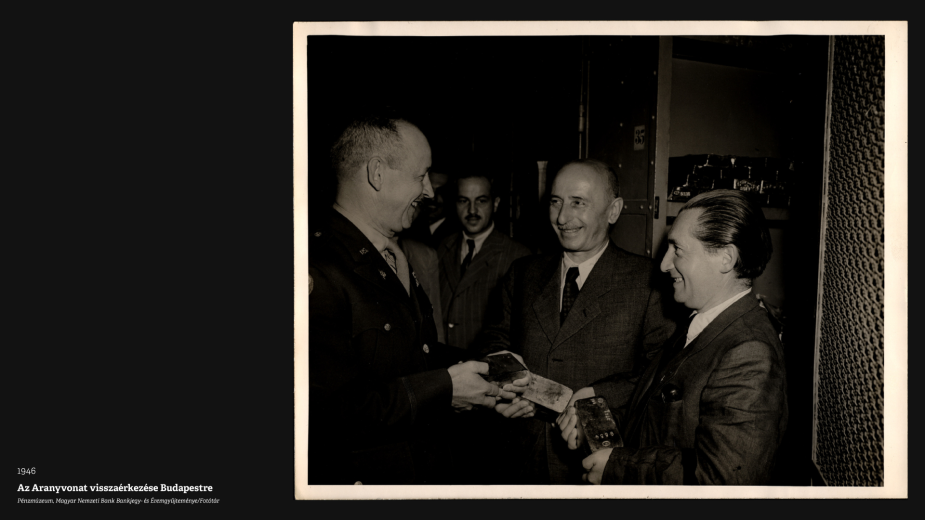
It was 80 years ago, in May 1945, that the entire gold reserves of the Magyar Nemzeti Bank found a safe haven. On the anniversary of this historic event, it is worth recalling not only the economic significance, but also the heroism of the human spirit that was showcased at this time.
Thanks to all the sacrifices made by the central bank's employees, Hungary's gold reserves came home after the conclusion of the Second World War, while other countries' gold reserves were lost forever due to the armed conflict.
The Gold Train begins its journey
Years before the outbreak of the Second World War, the Magyar Nemzeti Bank had already begun to protect its assets. Underground bunkers were built in Budapest and Veszprém to protect the country's financial assets in the case of an emergency. When the front approached Hungary in 1944, preparations began for the risky venture known today as the legend of the Gold Train.
This train was carrying not only the Magyar Nemzeti Bank’s 33 tonnes of gold reserves, but also our irreplaceable national treasures which were: the corvinas of Matthias, the stamp collection of the Royal Hungarian Post Office, the silver reserves and the entire stock of pengő banknotes. The valuables were accompanied by hundreds of staff and the family members of the Central Bank, living in the wagons, exposed to the hardships of winter and war: minus 20 degrees Celsius, often in unheated wagons, with little food. Many were desperate, some contemplated turning back. Children slept on top of crates of gold; women tried to maintain a minimum of intimacy in 'toilets' separated by sheets.

May turnaround – The gold is safe
After six weeks of delays, the train could only continue its journey at the end of January 1945, after the Szálasi government had reached an agreement with the Germans. The train arrived in Spital am Pyhrn, where the gold, banknotes and documents were deposited in the crypt of a Benedictine monastery. After these ordeals, the safety of the valuables was far from certain. In the last days of the war, the leaders wanted to move the valuables to the West, and negotiations began. However, the German authorities only gave permission for the valuables to be transported, and only 30 of the central bank employees were allowed to accompany the treasures, which were kept in Spital. The growing threat drove the rescue team to a desperate measure that sealed the fate of the Gold Train: on 2 May 1945, Frigyes Tarnay, the Inspector General, and his colleague József Tuboly took a classified letter to the US Army in Salzburg, crossing German checkpoints and risking their lives. The mission was a success, albeit by the skin of their teeth:
On May 7, 1945, the last day of the European war, a German team tried to retrieve the gold reserve, but American tanks appeared in Spital.
American soldiers loaded the gold onto three trucks and escorted by two tanks, transported it to Frankfurt am Main, where it was stored in the basement of the Deutsche Bundesbank. This day - 7 May 1945 - was one of the most important turning points in Hungarian financial sovereignty, when the gold was finally secured. István Cottely, the former CEO of the bank, recalls the day as such:
"I was leaving my room to send a protest to the governor with someone when I heard the first tanks roaring outside. I ran to the window. The tanks had white stars on them. I escaped."
Homecoming and a new beginning - The birth of the forint
The gold arrived in Budapest in August 1946, accompanied by two American guards, without a single gram missing. It formed the gold basis of the forint, which was introduced on 1 August 1946.
In his memoirs, Lajos Tordai, a former MNB employee, writes: "The gold was transported with a full security detail. The 2 wagons of gold were sealed and, as it turned out when the wagons were opened in Pest, there were 2 American field gendarmes sitting in the wagons with a machine gun each. Thus, the gold was safely delivered to Pest..."
Although the gold made it home safely and the forint has been the currency of our country ever since, the ordeal of the heroes of the Gold Train did not end there. Those who risked their lives for it were not celebrated but relegated to the periphery of history. Many were B-listed, deprived of their jobs, and many were forced to emigrate. The first official recognition was 60 years later: in 2005, the Magyar Nemzeti Bank, led by Zsigmond Járai, thanked them for their service for the first time.
"We stayed in Spital am Pyhrn for a long time after the gold was delivered to Frankfurt. By August 1946, news of B -listings were already coming in from back home, so many of us did not even think of returning. However, most of them returned home, accepting the persecution. Our stay in Spital am Pyhrn was taboo for 40 years. It's time to report on it."
By István Kümmerle.
Today, 80 years later, on the anniversary in May, we remember those who not only guarded the gold reserves, but the honour and future of the nation as well.
Further news
All newsThe Tarnay family brought silver bowls
Thank you for your kind understanding!
The organizers of the program signed the joint agreement at the Money Museum
Thank you for your kind understanding!
The Tarnay family brought silver bowls
Thank you for your kind understanding!
The organizers of the program signed the joint agreement at the Money Museum
Thank you for your kind understanding!



